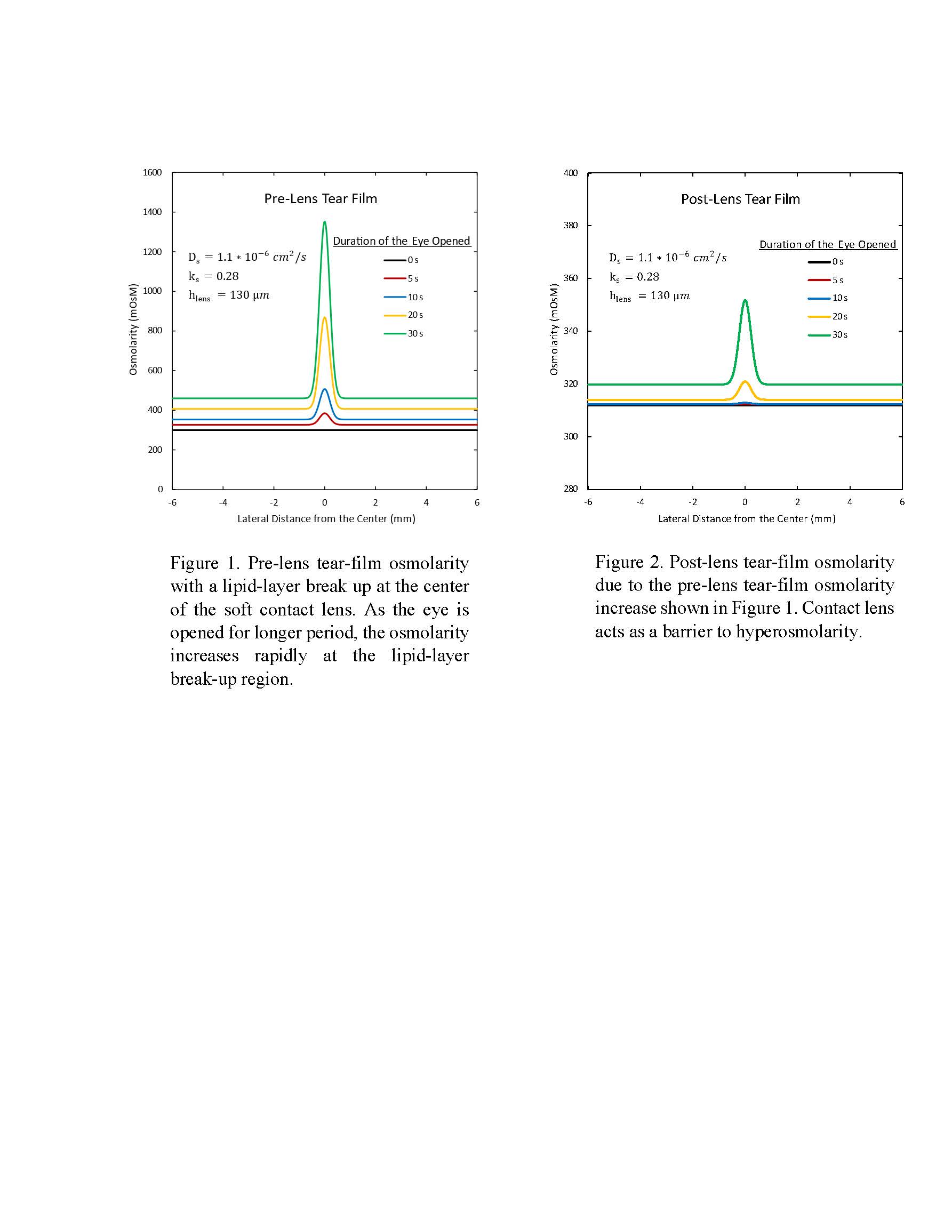(522f) Can Soft Contact Lenses Protect the Cornea Against Tear Hyperosmolarity?
AIChE Annual Meeting
2023
2023 AIChE Annual Meeting
Engineering Sciences and Fundamentals
Dynamic Processes at Interfaces
Wednesday, November 8, 2023 - 5:10pm to 5:30pm
A soft contact lens (SCL) places a 100-µm thick hydrogel between the pre-lens tear film exposed to evaporative salinity spikes and the post-lens tear film covering corneal nerve fibers. Thus, SCL wear might protect the cornea from large salinity spikes and, accordingly, prevent corneal inflammation due to chronic hyperosmolarity exposure. We address this question by analyzing 2D-transient Fickian salt transport during interblinks from the pre-lens tear film to the cornea through a SCL exposed to a pre-lens salinity spike. Initial condition of the post-lens tear film and contact lens is set from the periodic steady analysis of the tear system by Cerretani et al.3 The boundary condition at the anterior surface of the SCL depends on time and is obtained from the black-spot/streak analysis of Peng et al.1 Zero salt flux is imposed at the interface of the post-lens tear film and the cornea. Remaining lens/tear-film boundaries require continuity of flux and Nernst-law phase equilibria. Numerical solution is by finite-element discretization.
Figure 2 provides example osmolarity profiles at the corneal surface while wearing a commercially available SCL that exhibits a measured salt diffusivity of DS = and a partition coefficient of kS = 0.28 4 (lens salt partition coefficients range between 0.15 ~ 0.70 and have little influence on post-lens tear osmolarity within this range). Clearly, the SCL significantly attenuates the inflammatory salt spike of the pre-lens tear film in Figure 1. Lower lens diffusivities prevent corneal hyperosmolarity altogether.
For the first time, we provide quantitative assessment of the post-lens tear-film osmolarity during SCL wear. We conclude that the human cornea can be protected from experiencing hyperosmolarity by wearing a SCL designed with low salt diffusivity.
References
- C. Peng, C. Cerretani, R.J. Braun, and C.J. Radke, “Evaporation-Driven Instability of the Precorneal Tear Film,†Advances in Colloid and Interface Science, 206, 250-264 (2014).
- Liu H, Begley C, Chen M, Bradley A, Bonanno J, McNamara NA, et al. A link between tear instability and hyperosmolarity in dry eye. Invest Ophthalmol Vis Sci., 50:3671–9 (2009).
- Cerretani and C. J. Radke, “Periodic-Steady Tear Dynamics in Healthy and Dry Eyes,†Current Eye Research, 39(6), 580-595 (2014).
- Guan, M. E. González Jiménez, C. Walowski, A. Boushehri, J. M. Prausnitz, and
C. J. Radke, “Permeability and Partition Coefficient of Aqueous Sodium Chloride in
Soft Contact Lenses,†Journal of Applied Polymer Science, 122(3), 1457–1471 (2011)

